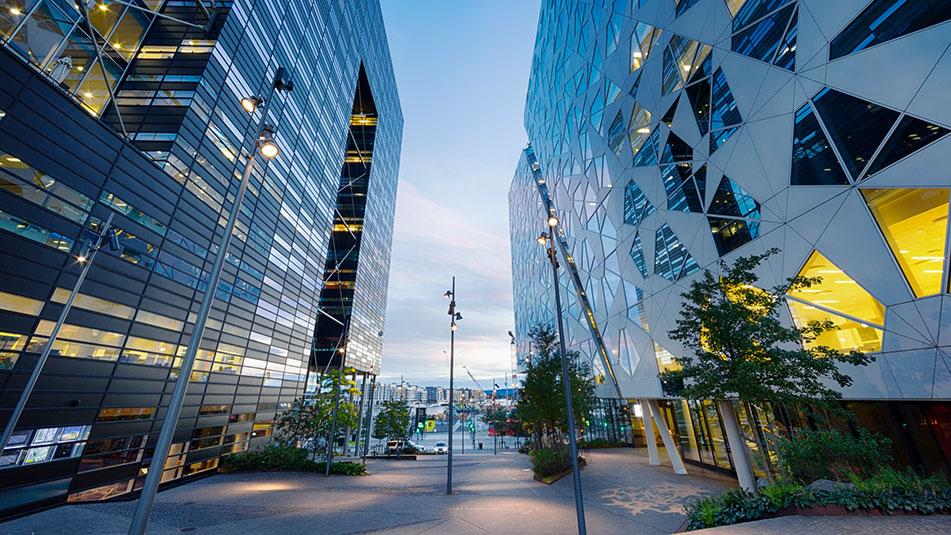How to Analyze the Condition of an Industrial Facility before you Buy or Lease
This piece was originally published on LinkedIn.
Is your business looking to move into a new space? Unless the property you’re considering is newly built, chances are you’ll have to go through the extensive process of checking the structure and overall site to ensure it’ll be able to support your company’s intended use. A simple visual inspection of the facility’s internal systems and the site’s overall physical condition may not be enough to tell you the full history of property. Relying solely on this kind of assessment is like looking in the mirror to check your cholesterol; in other words, you need to dig deeper than what’s on the surface. To satisfy your concerns of the property’s suitability or potential liability to your business, ask yourself these seven guiding questions.
1. What is the condition of the HVAC system?
As a rule of thumb, when inspecting any potential property, start by examining the HVAC system on the roof that cools the premises. Verify the year it was installed to confirm its age and useful life, and request maintenance records to confirm that the system has been maintained on a quarterly basis.
If you’re considering a multi-tenant building, ask neighboring occupiers about actual maintenance practices, especially in inclement weather geographies. Are there any legacy systems left on the roof that could compromise the roof membrane? If so, who’s responsible for the repair and/or removal of these systems? Once these important questions are answered, you may be able to negotiate a warranty on the system’s integrity along with lease language to offset any potential costs of needed repairs or replacement during the last lease year. Typical warranty periods achieved in negotiations are up to 12 months.
2. What is the condition of the slab, foundation and dock height?
For industrial space users, a detailed inspection of the facility’s slab, foundation and dock height will be especially important. These assessments will help identify cracking, shifting, sloping or chipping of seams that can lead to damage to material handling equipment. If there’s unplanned sloping or settling, this may impact the installation of a racking system. Be sure to ask what year the building was constructed and of the construction practices at that time related to site compaction. The height of the warehouse floor compared to the truck well height should also be analyzed by your transportation team to confirm that tractors, trucks and other delivery vehicles can load and offload effectively.
What are the average dock heights? Are the docks level? For facilities that receive freight from various carriers, it’s important that the dock height be between 48” and 52” so as to not damage Edge-of-Dock equipment or worse, cause an accident due to excessive sloping. Driving fleet vehicles to the site during your inspection is a great way to test dock height and functionality.
3. How will the facility receive connectivity?
Is the building served by fiber lines? If so, which companies currently provide connectivity service? This can impact alarm monitoring system capabilities, total cost to deploy alternative services, like satellite or dark fiber, and timing to transition an operation. Sometimes, a provider will claim to be able to service a building only for this to change during a technician visit.
4. What is the condition of the electrical system?
Hire a licensed building inspector or electrician to help you evaluate electrical service to the building. It’s good practice to test or verify these systems to validate that electrical panels, distribution, transformers and wiring are in good working condition before entering into a lease contract or within a certain amount of days after having signed a lease.
5. How are the driveways, truck courts and yards?
Because industrial facilities deal with a high volume of traffic for deliveries to and from the property, carefully examining the driveways, truck courts and yards will yield some of the most important questions of the inspection process.
What are the conditions of the drainage, gutters and sloping of the property? Check the property to see if there are any areas where water can accumulate or seep into or near the building structure. Check to see if the gutters been damaged or clogged in a way that would impact their ability to release water from the building efficiently. Sometimes, if the drains aren’t properly cleared, water can gather on the roof and compromise the roof membrane.
Is the yard composed of permeable material such as ¾ inch rock, decomposed granite or road base? The material of a yard will impact how often it requires new surfacing and how it handles in different weather conditions. Soft, non-compacted yards may cause trailers to sink, poor operating conditions and additional vehicle maintenance. Knowing the site’s previous industrial occupiers and understanding how they used the property will be a useful component of your inspection process and can shed light on the suitability of the yard. Again, be sure to verify who’ll be responsible for performing and/or paying for repairs and maintenance of the truck courts or yard areas. Sometimes, for multi-occupier leases, this will be budgeted as a common area expense; for single occupier buildings, the sole tenant may be fully responsible for these expenses. This should always be carefully negotiated during the lease review process.
6. What is the site’s historical environmental condition?
Did the previous occupier conduct a Phase I or Phase II Environmental Assessment? Similar to a visual inspection, a Phase I EA is a visual assessment and records search. But even if one of these has been recently performed, it doesn’t mean you’re free and clear of pre-existing conditions. In a trucking environment, if there are plans to alter the property or operate trucks, consult a legal expert about how to establish a baseline and prevent future claims stemming from prior uses of the site. “Who does this oil belong to?” can be a scary question to have to answer at the end of a lease term.
7. What is the condition of the fire suppression system?
In the case of a leased space, it’s important to understand who’s responsible for maintaining the building’s fire system and how the system is designed. What are the flow ratios and are they appropriate for your operation? County fire code will determine the required flow ratios for a given list of inventories. The quickest way to get answers is to work with local fire inspectors and submit quantities and types of materials in order to validate compliance given the existing systems in place. In most cases, an Early Suppression Fast Response (“ESFR”) can accommodate almost all uses for a space, except those involving corrosives or explosives in which case additional permits will be required.
Carefully examining each of the facility’s systems and exploring the history of the site are critical steps to take when considering investing in an industrial property, regardless if you’re leasing or buying. Conducting a thorough investigation into these areas will undoubtedly help you in uncovering unknown risks prior to committing to the space and assist you in avoiding potential costs in the future.




